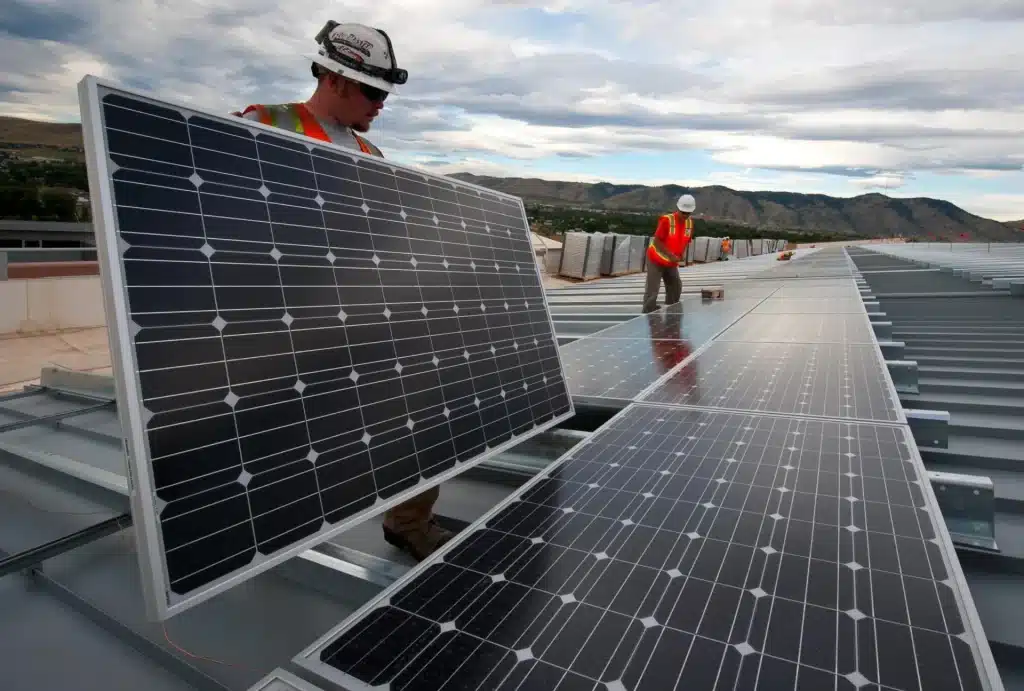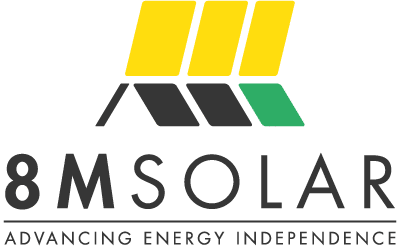The sun is an unlimited resource of energy that has captivated humanity for all time. Solar panels may seem commonplace today, but they’re a relatively new way to capture the renewable energy of the sun. But solar energy has been around since the beginning. Solar power has been used by people for centuries, though in different ways than we see today.
The first known use of solar energy was using glass and magnifying the sun’s rays to start small fires for cooking. From there, people harnessed the power of the sun to light torches and illuminate Roman bathhouses. After centuries of further development, we have the solar energy of today. Today, we often see the sun’s energy powering houses and businesses in the form of solar panels, and solar will continue to grow and develop. In this article, we will discuss a brief history of solar energy from the earliest forms, the invention of solar panels, the growth of solar energy, and finally where solar is going in the future.

Early Solar Energy History
The earliest instances of harnessing solar energy are found in the seventh century BC when glass was used to light small cooking fires. In the third century, Greeks and Romans used glass and sunlight to light torches for religious purposes. There are also records in China of using solar energy and glass to light fires for religious ceremonies in 20 AD. There is an interesting story from the second century BC about solar energy. During a siege on Syracuse, the ancient Greek scientist Archimedes focused sunlight through magnifying glass to light Roman ships on fire. In the Americas, the Ancestral Puebloan peoples in the thirteenth century designed and constructed masterful cliff dwellings. These palaces were south facing in order to capture sunlight and heat the complex. In the 1700s and 1800s, sunlight was used to power ovens and even ships.
Who Invented Solar Panels?
In 1839, at just 19 years old, the French scientist Edmond Becquerel uncovered the phenomenon known as the photovoltaic effect. He observed that when electrons reached an excited state within a material’s conduction band, they could move freely, thereby generating an electric current. Although his discovery wasn’t widely acknowledged at the time, Albert Einstein later brought attention to the solar potential in a paper he wrote, which ultimately earned him a Nobel Prize in 1922. Charles Fritts made another significant contribution in 1883 by inventing the first solar panel, which involved a thin selenium layer coated with an even thinner layer of gold. This rudimentary solar cell had a conversion efficiency of just about 1%, but it paved the way for the broader movement to harness solar energy.

The Growth of Solar Technology
Solar technology would never have become so widespread and accepted if it weren’t for the growth and promotion of the industry. One of the earliest promoters of solar energy was Albert Einstein. In 1905, he published a paper on the photoelectric effect and how light carries energy. This paper later earned him a Nobel Prize. Einstein’s research and discoveries helped show the world how useful and scientific solar technology is.
One of the most important areas of growth for solar technology was the space race. In 1956 William Cherry proposed using photovoltaic technology on satellites orbiting the Earth. Only two years later, the Vanguard I used a small solar array to power its radio. The Vanguard II, Explorer III, and Sputnik-3 used silicon solar systems. In 1964, NASA launched the Nimbus I, which was the first satellite equipped with solar panels that tracked the sun. Solar energy continued to power space advancements for several decades and continues to play an important role in satellites.

The Commercialization of Solar Energy
The 1970s led to developments in solar energy that made solar panels more affordable. Dr. Elliot Berman and Exxon designed a significantly cheaper solar cell that reduced the cost per watt from $100 to $20. Now that solar cells were more affordable, solar cells and panels found their way into many industries. Solar energy powered navigation and warning lights for offshore oil rigs, lighthouses, railroad crossings, and domestic applications where the grid didn’t reach. In the 1970s,. President Jimmy Carter installed solar panels on the White House, and the first house had panels installed to heat water in 1973.
The Current State of Solar Power
Though solar energy has been around for such a long time, the most extreme developments and growth in solar technology are recent. The jump in affordable solar energy in the 1970s led to an increase in solar systems, but $20 a watt still made systems expensive for many residences. Recently, developments have been made in affordability, and solar cells are now more efficient while only costing $0.50 a watt. Today, solar energy has never been more affordable or efficient.
Solar panels are also much more commonly used and accepted. In recent years, the United States has passed over two million solar installations on homes and businesses, and solar accounts for 1.6% of the total US electricity generation. Solar energy is becoming more widely accepted and increasingly powering more and more buildings. In North Carolina, we are ranked second in the country for solar installations and are continuing to reduce our carbon footprint.

The Future of Solar Energy
While solar energy has developed immensely, there’s still a need for future innovation. Modern solar cells average about 15 to 18% efficiency, so the future of solar may hold a new design in solar cells that can increase efficiency while also increasing the affordability of solar cells. This new technology would potentially increase the use of solar energy and technology, reduce dependence on other energy sources, and reduce electricity’s impact on the environment. Solar technology, especially after more advances, will continue to spread throughout the world and provide energy to homes and businesses in an affordable and environmentally-conscious manner.

